Panther - quick start
Panther is an autonomous, mobile robot (AMR) platform dedicated for an outdoor environment. Compliant with a IP54 or IP66 rate of protection. Depending on the use case, it can be equipped with a robot arm, LIDAR, RGB-D camera, GPS, UWB, and other additional equipment. It can be used in various areas of application, such as agriculture, rescue, inspection, and many more.
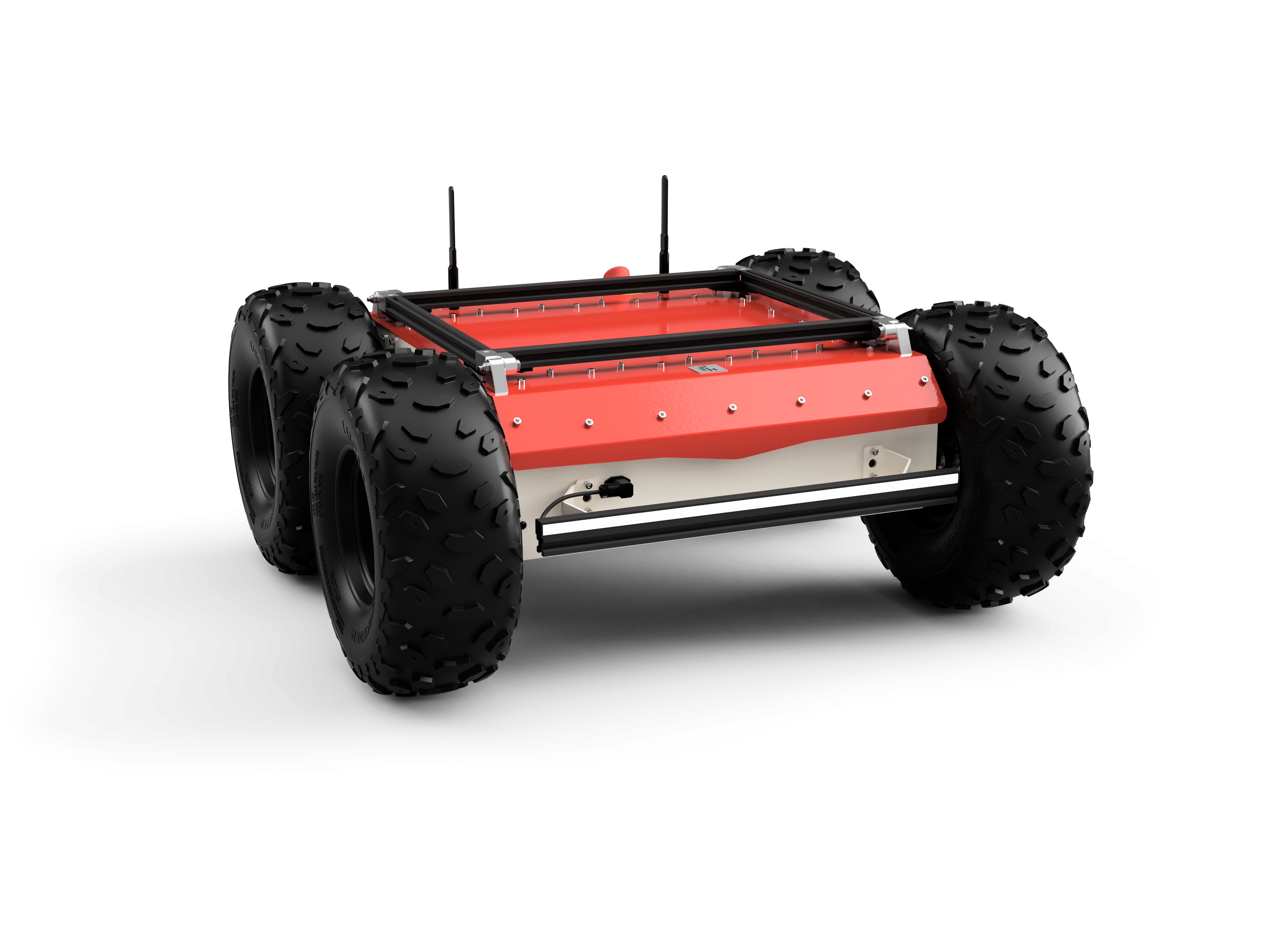
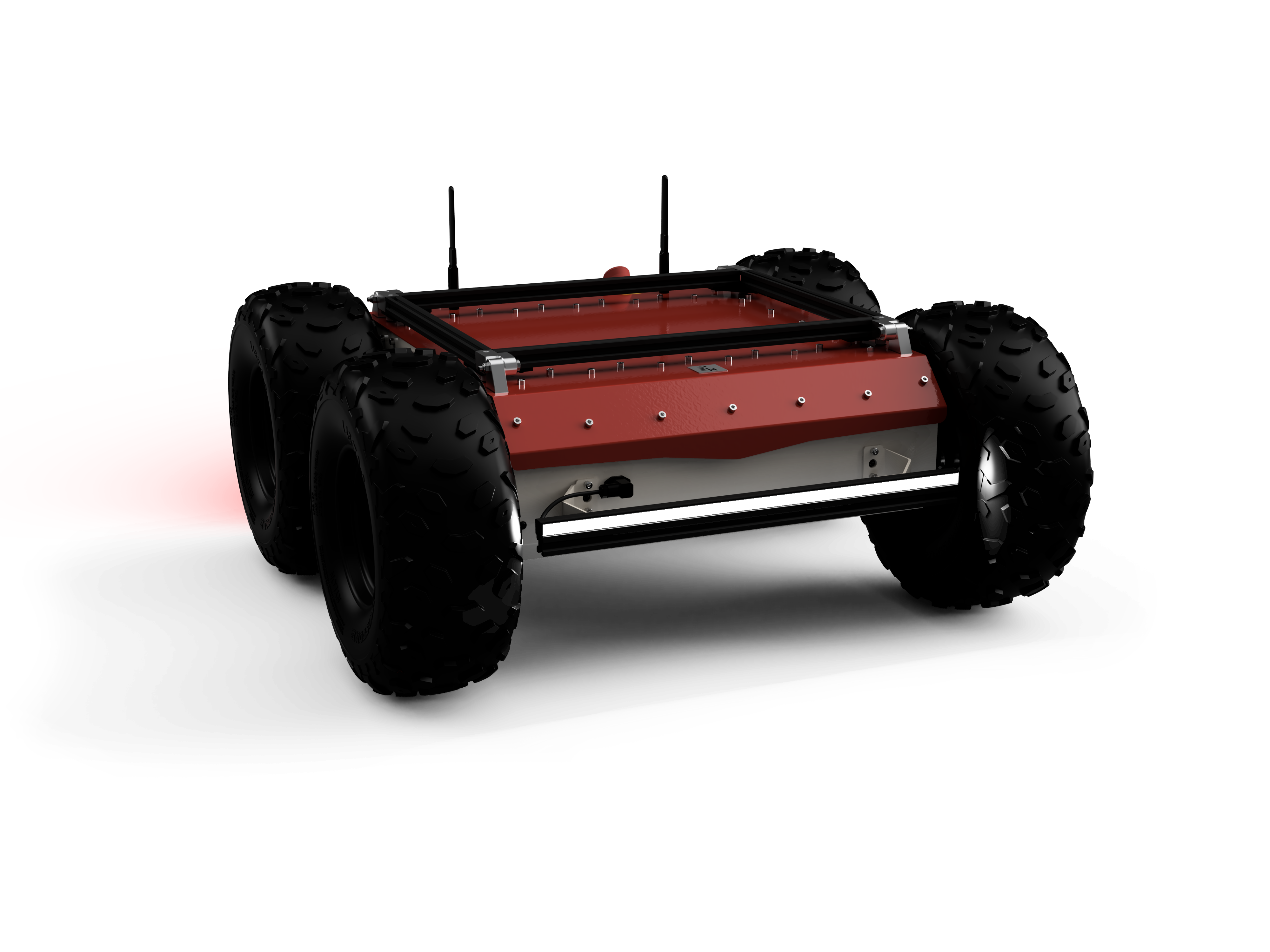
If you don't have Panther yet, you can get it from the online store.
This is a quick-start guide. If you need a manual instead, you can find it here
Unboxing
Package Content
The standard package contains:
- Panther robot
- Accessories box with:
- charger
- Logitech f710 gamepad
- RUTX11 accessories
The content of the package may vary depending on the additional elements bought alongside Panther.
Unboxing Robot
The Panther robot is shipped by default in a wooden box, such as the one shown below. Unboxing the robot is quick and simple and can be done in a few simple steps. Follow the instructions below when you receive your robot.
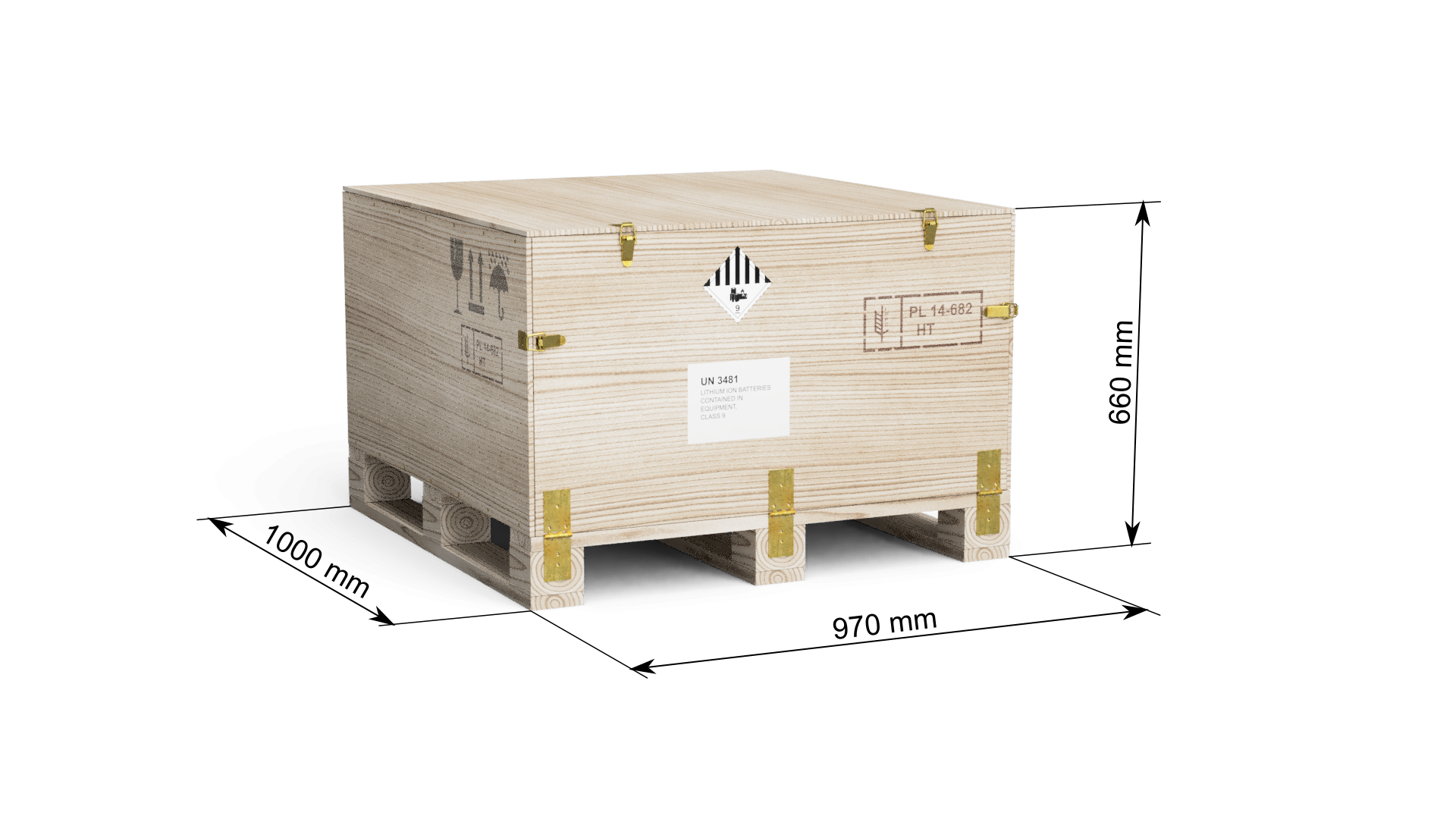
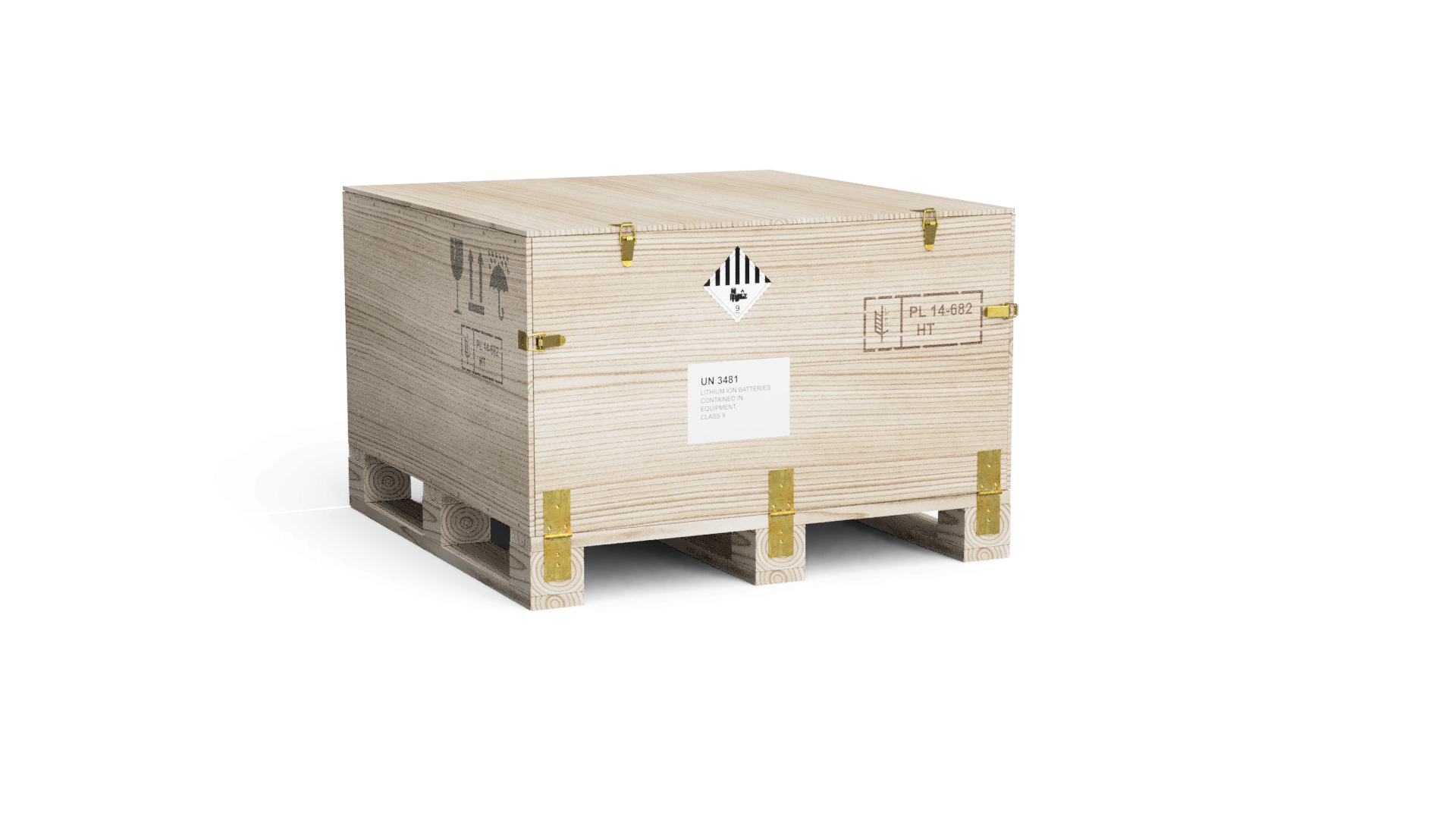
First, unlock and open the box's front side.
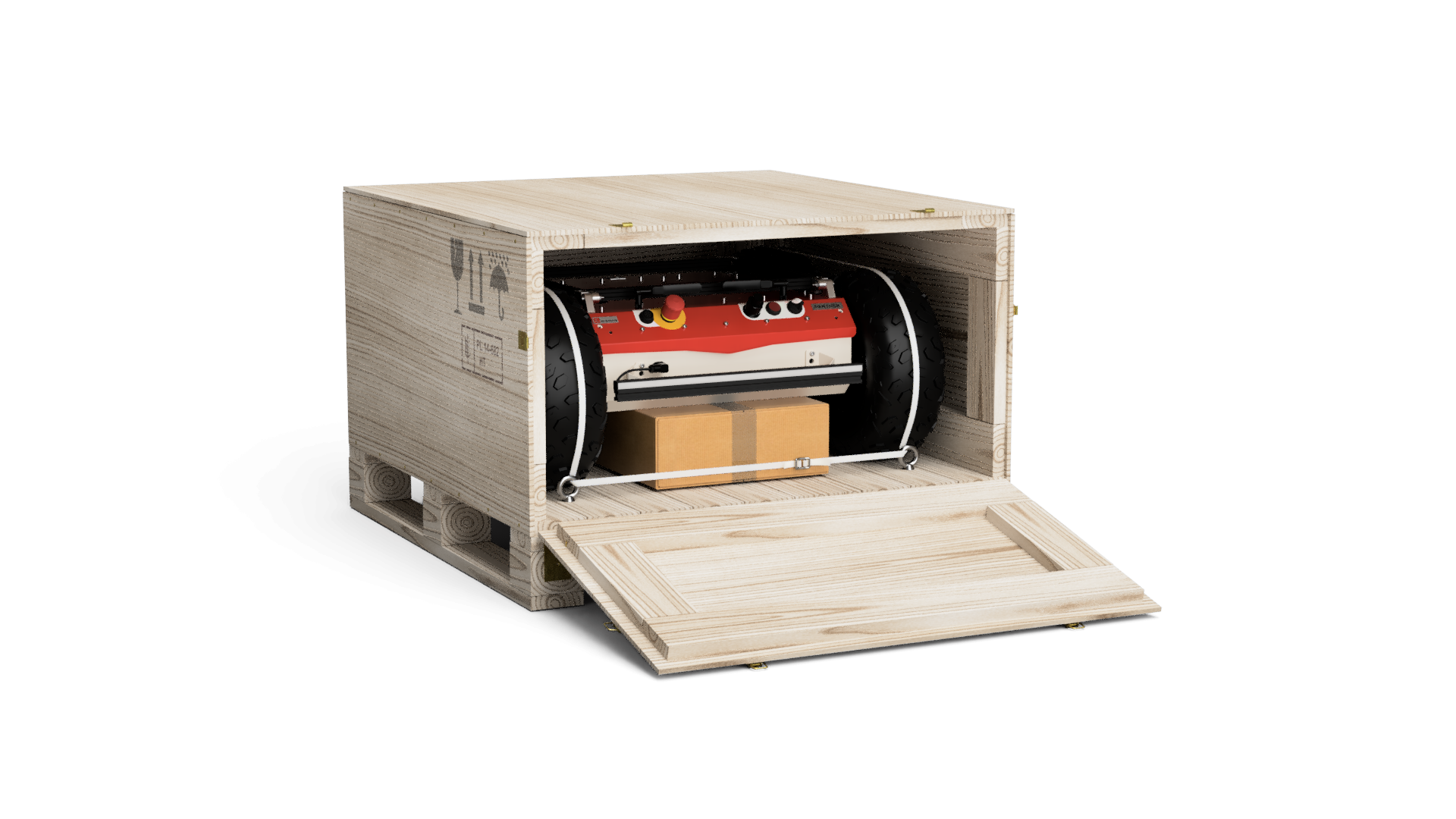
Check if it is possible to drive the robot out of the box (it may require removing some elements first, like the accessories box). If so, you can continue with the next step. Otherwise, go to the Disassembling the Box section.
Cut the white stripes holding the robot and remove additional kits, such as the accessories box, etc. Now, you can pull the robot out of the box using its bumper.
If you feel resistance when pulling Panther out, go to the stage of disassembling the box. Otherwise, the extracted elements may be damaged.
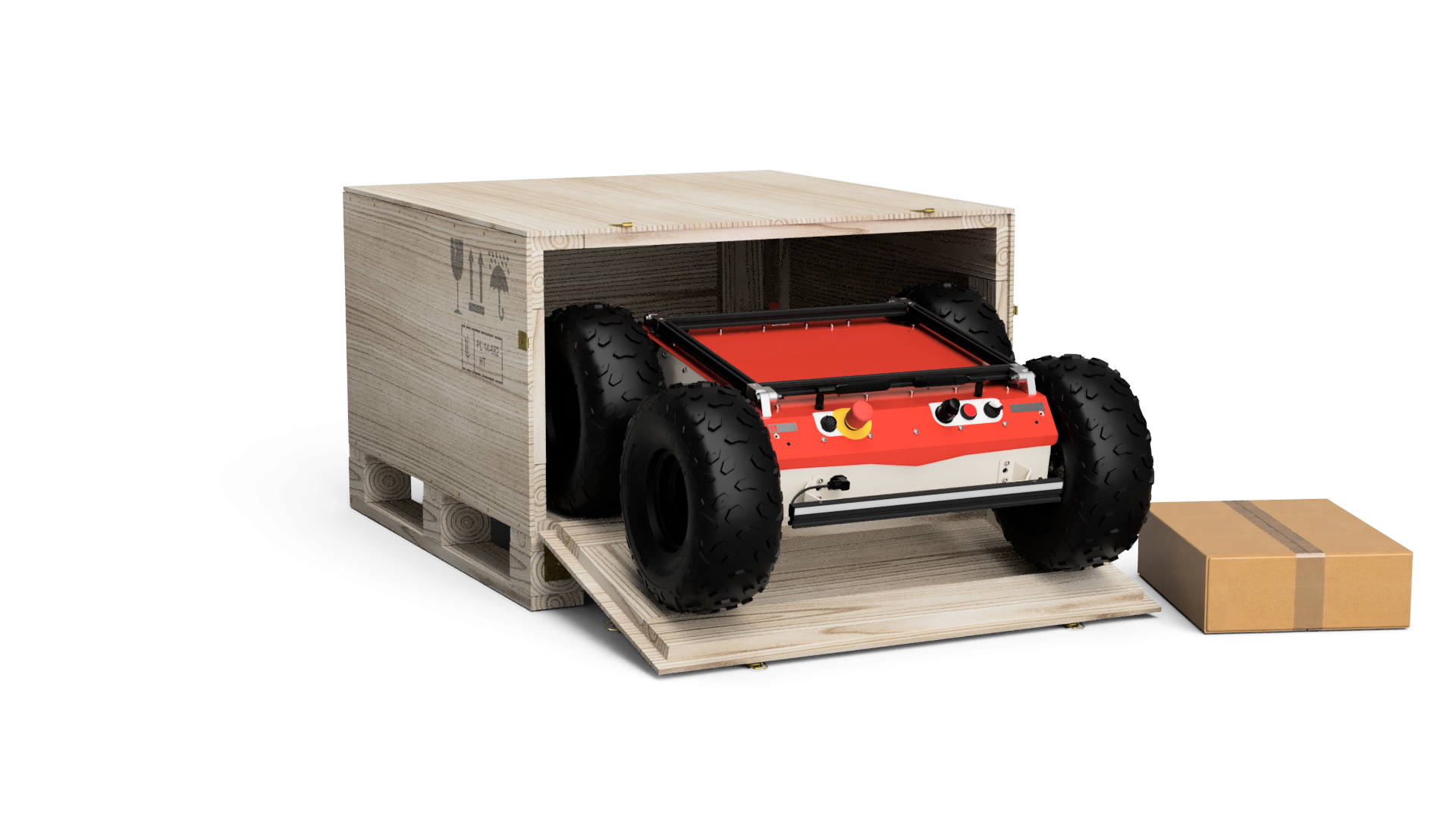
Disassembling the Box
If it is impossible to drive the robot out, it is necessary to partially disassemble the box. Unscrew the screws holding the box's upper part to its bottom, as shown below. Then, carefully remove the box's upper part.
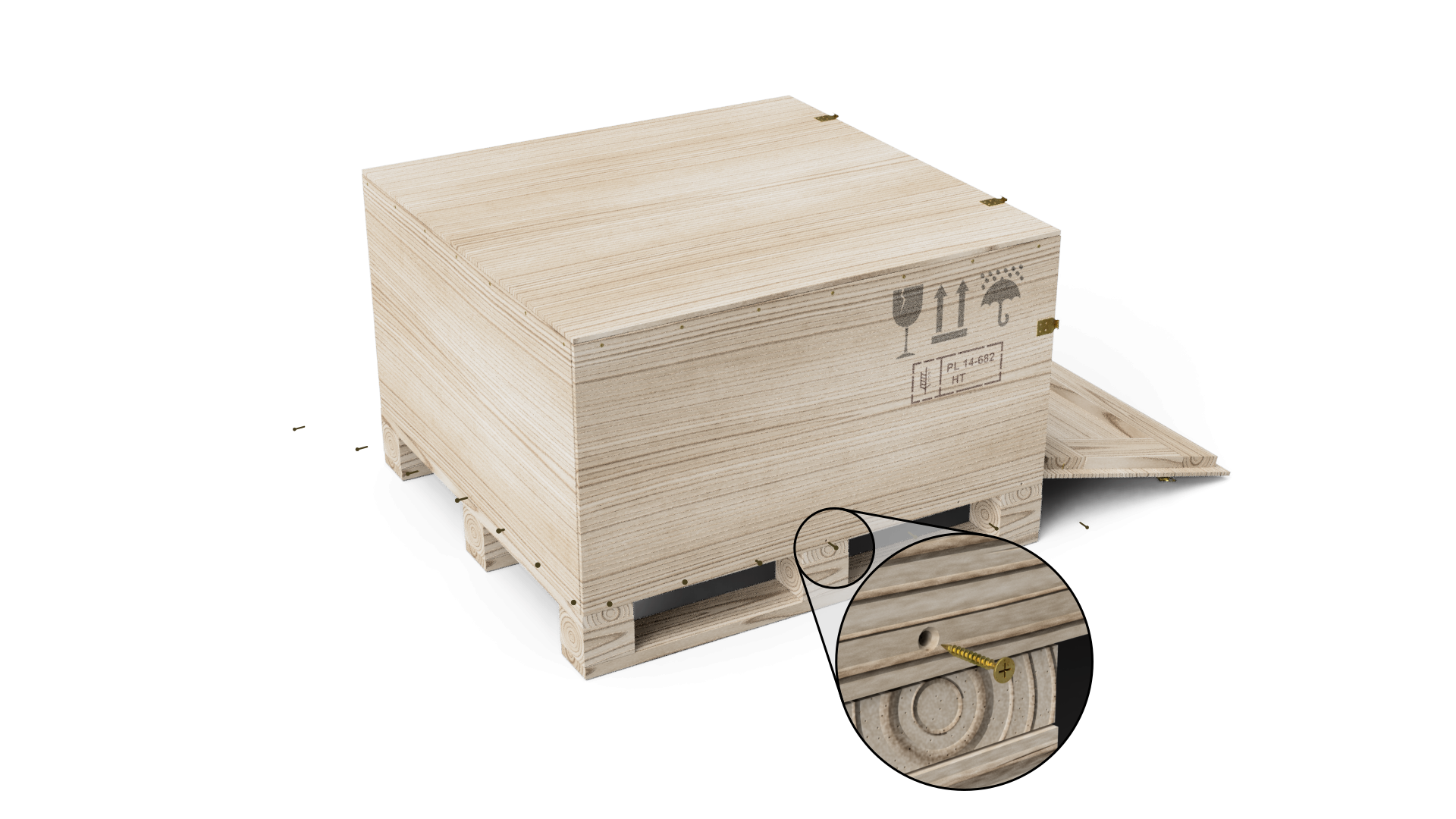

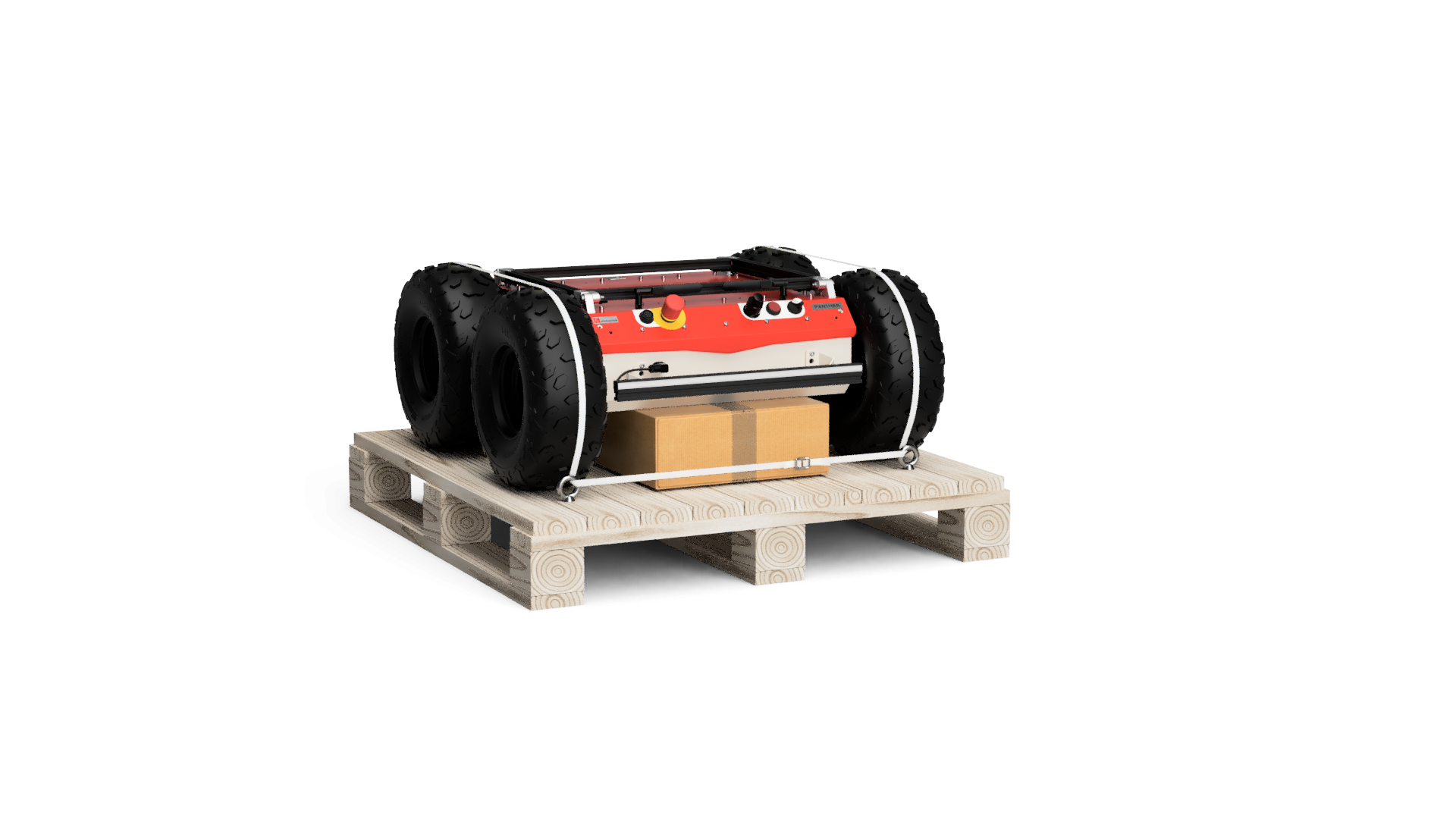
Cut the white stripes holding the robot and remove additional kits, such as the accessories box, etc. Now you can safely move the Panther off the platform.
Quick Demo
We know that you would really like to read the Quick Demo section now, but your safety is the most important thing.
A brief safety information
- Please read the Safety instructions first.
- If you are not sure how something works, please read the Panther manual.
- Please remember that the mechanical Emergency Button is available on the robot as well as software one in the WebUI (on the screen) and the Gamepad, but in some cases, you may not be able to use them quickly enough to stop the robot before causing damage.
- A detailed description of the safety features is available in the Safety section.
- Panther v1.2
- Panther v1.0 - v1.06
Here is a very basic demo that allows you to use your Panther for the first time without coding:
Rotate the two-position Main Switch to the ON position. Push the Power Button for 1 second, a red light on the Power Button, and the LED panels on the Bumpers (called Bumper Lights) will light up. Wait for Wi-Fi to come up:
SSID: Panther_<serial_number>
PASS: husarion
- ROS 2
- ROS
❗ WebUI in ROS 2 on Panther coming soon ❗
Controlling Panther using the included Gamepad will work as soon as the wireless USB receiver is plugged into the robot.
Connect to Wi-Fi and open the WebUI joystick available in your browser at 10.15.20.2:8000. It allows you to manually control your robot and manage the E-stop.
When the robot is booted correctly, you should see red lights flashing. Now you can unlock the Emergency Button and reset E-stop using WebUI. Bumper Lights should start flashing green.
Use the WebUI joystick carefully, as Panther is quite a heavy robot with powerful motors. Especially during a first run, be prepared to push the Emergency Button rapidly if needed.
Here is a very basic demo that allows you to use your Panther for the first time without coding:
Unlock the Emergency button and set the power switch to the right (it is a 3 pose switch, set to the 3rd pose), and then wait for Wi-Fi to come up:
SSID: Panther_<serial_number>
PASS: husarion
Connect to Wi-Fi and open the WebUI joystick available in your browser at 10.15.20.2:8000. It allows you to manually control your robot and manage the E-stop.
When the robot is booted correctly, you should see red lights flashing. Now you can reset E-stop using WebUI. Bumper Lights should start flashing green.
Use the WebUI joystick carefully, as Panther is quite a heavy robot with powerful motors. Especially during a first run, be prepared to push the Emergency Button rapidly if needed.
Connecting Panther to Your Wi-Fi Network
- Panther v1.2
- Panther v1.0 - v1.06
Connect to Panther's Built-in Computer using SSH:
ssh husarion@10.15.20.2
The default password for user husarion is also husarion.
When you are connected to your robot, you should open ~/panther_rutx11/config.json file.
nano panther_rutx11/config.json
Edit the section named wifi_client filling in your SSID and matching password. If you want to connect to multiple networks duplicate whole block, Panther will try to connect to them in given order. If you want to connect to open network leave password field empty:
"wifi_client":[
{
"ssid":"YourProtectedNetwork",
"password":"YourPassword"
},
{
"ssid":"YourOpenNetwork",
"password":""
}
]
By default Panther uses 2.4 GHz WiFi for uplink, if you want to use 5 GHz change value of key "wifi_client_radio":0 to "wifi_client_radio":1
Save by pressing Ctrl+O and exit by Ctrl+X. To apply new settings, execute python script by command:
panther_rutx11/setup_wifi.py
When Panther connects to our network, the message Success will be shown.
Wi-Fi must be within range of Panther. For more information, head to Network Section
Connect to Panther's Built-in Computer using SSH:
ssh husarion@10.15.20.2
The default password for user husarion is also husarion.
When you are connected to your robot, you should open ~/panther_rutx11/config.json file.
cd panther_rutx11
nano config.json
Edit the section named wifi_client filling in your SSID and matching password. If you want to connect to multiple networks duplicate whole block, Panther will try to connect to them in given order:
{
"radio":"0",
"ssid":"SSID_of_your_network",
"password":"password_to_your_network",
"encryption":"psk2"
}
Save by pressing Ctrl+O and exit by Ctrl+X. To apply new settings, execute python script by command:
setup.py
When Panther connects to our network, the message Success will be shown.
Wi-Fi must be within range of Panther. For more information, head to Network Section
Remote Access
OPTION 1: In a Local Network
Use a SSH connection at your PC that is connected to the hotspot provided by Panther:
ssh husarion@10.15.20.2
The default password for user husarion is also husarion.
OPTION 2: Over The Internet (VPN)
If LAN access is not enough, you can access your Panther over the Internet from anywhere in the world with Husarnet. First, you should connect Panther to your internal Wi-Fi network, as described in the previous paragraph: Connecting Panther to Your Wi-Fi Network
Once your Panther is connected to your network, you can proceed to configure Husarnet. A full guide on how to do this is here.
Panther ROS Packages
At this stage, your Panther should be up and running, with a remote connection (either LAN or VPN) established from your laptop. Panther is equipped with preinstalled ROS packages within Docker containers, which are set to launch automatically upon boot. For more information on Panther's ROS system, please refer to Software guide.
ROS nodes running in the containers are accessible at the host operating system level.
Check available ROS topics:
- ROS 2
- ROS
ros2 topic list
The complete architecture of the Panther ROS 2 software is detailed in the Panther ROS 2 Api documentation.
rostopic list
The complete architecture of the Panther ROS software is detailed in the Panther ROS Api documentation.
You can run Panther's ROS packages natively on your Panther's host OS, by removing Docker containers, cloning, and building the panther_ros repository. However, it is recommended to use Docker images for this purpose.
Updating Basic Docker Images for Panther
Panther ROS packages are frequently updated to improve Panther performance or include new features. To update them to the latest version, first, check the latest stable Docker image version at husarion/panther. An example tag could be: noetic-1.0.0-20230324-stable.
Then access your Panther's terminal and edit the main compose file:
nano ~/compose.yaml
Update the Docker tag:
panther_ros:
image: husarion/panther:<newest-stable-tag> # example tag: noetic-1.0.0-20230324-stable
Restart the Docker containers to apply the changes:
docker compose up -d --force-recreate
Reference Projects
Now you know how to access Panther's ROS nodes from the Linux terminal.
Running ROS natively is fine for relatively small projects. For more complex ones, the full dockerized setup is a better approach.
Next demos start Panther's Docker containers in different configurations, so remember to stop the basic setup at first:
docker compose down
Find available projects below:
| link | description |
|---|---|
| panther-navigation | Autonomous mapping & navigation demo for Panther. Using navigation2 and slam_toolbox |